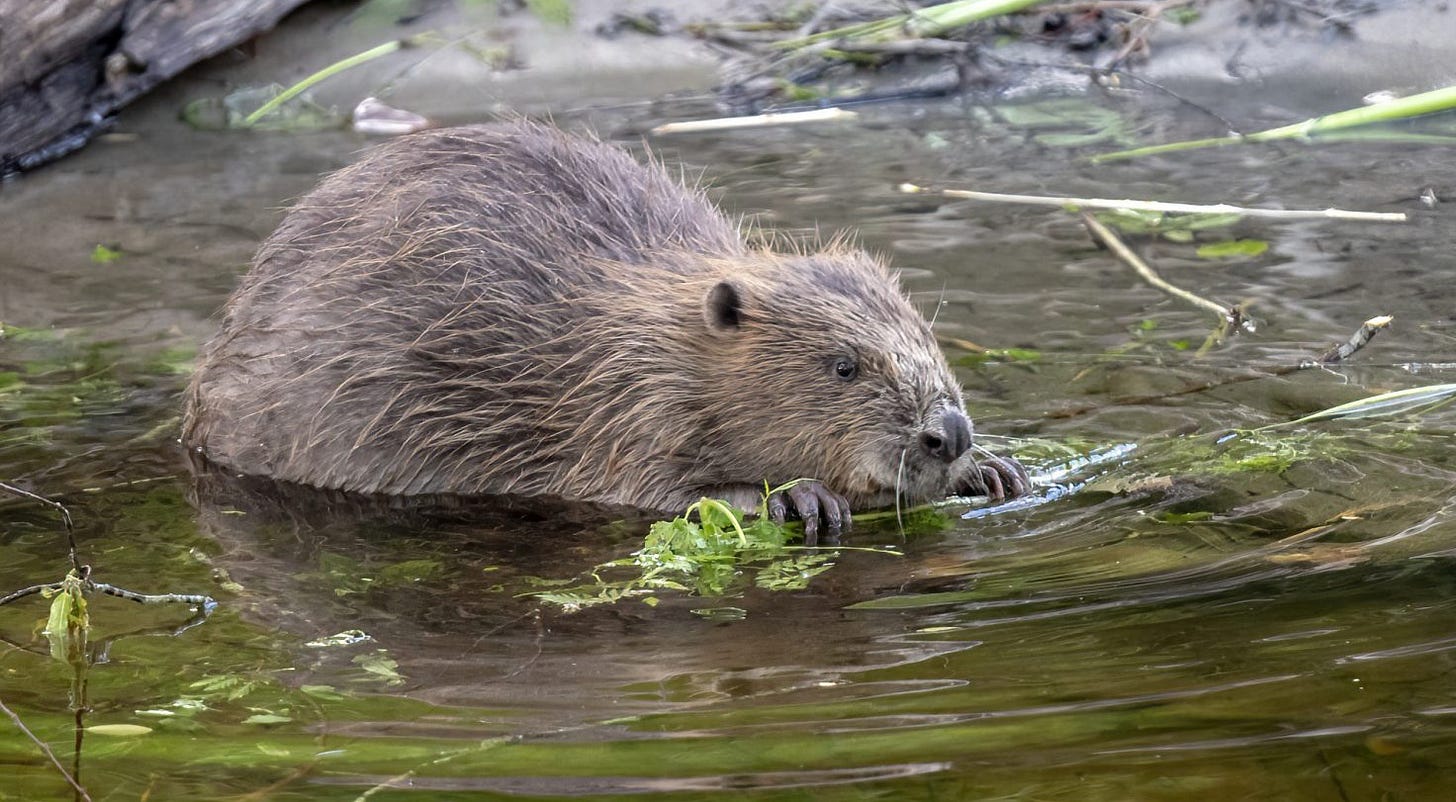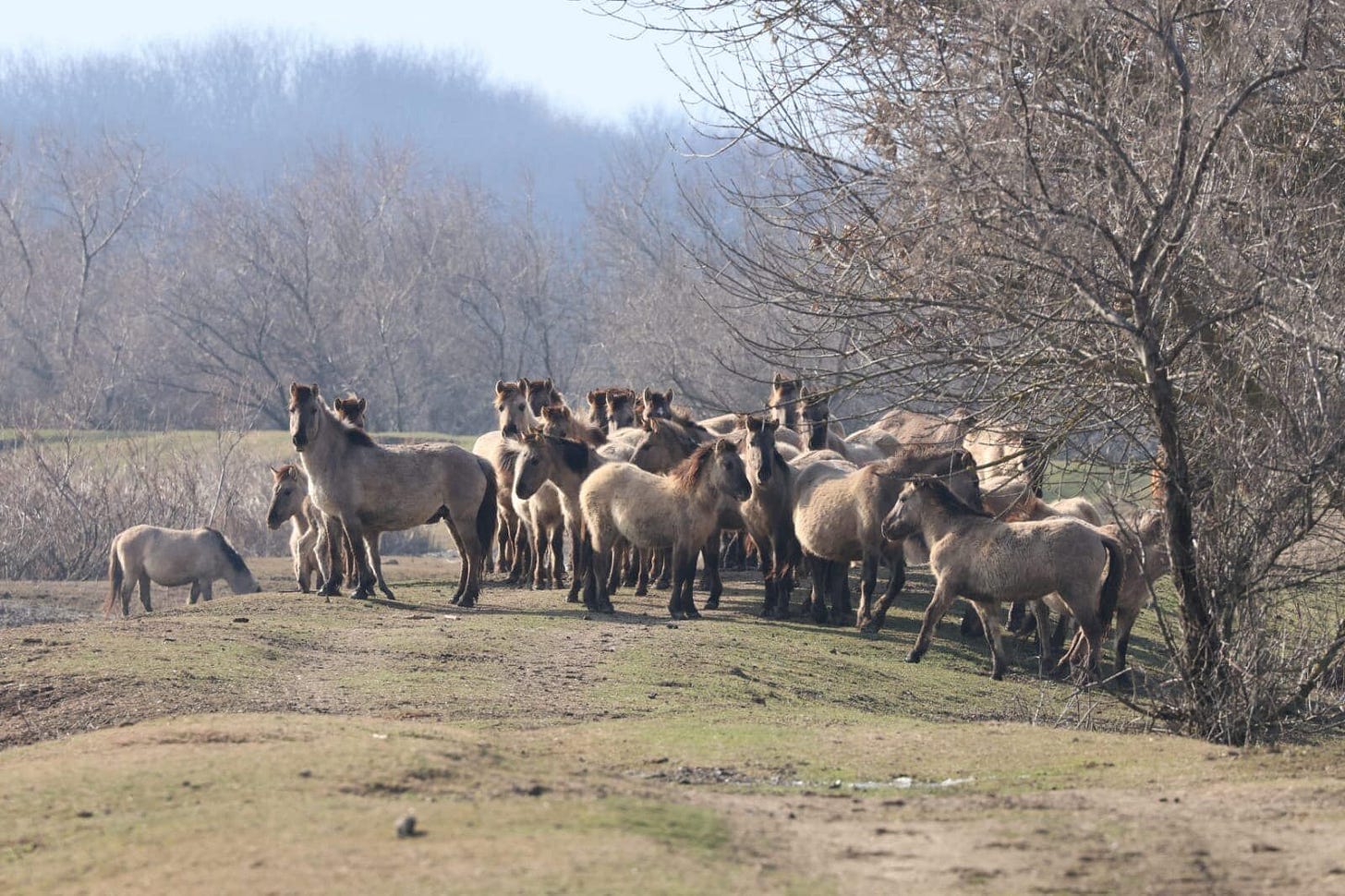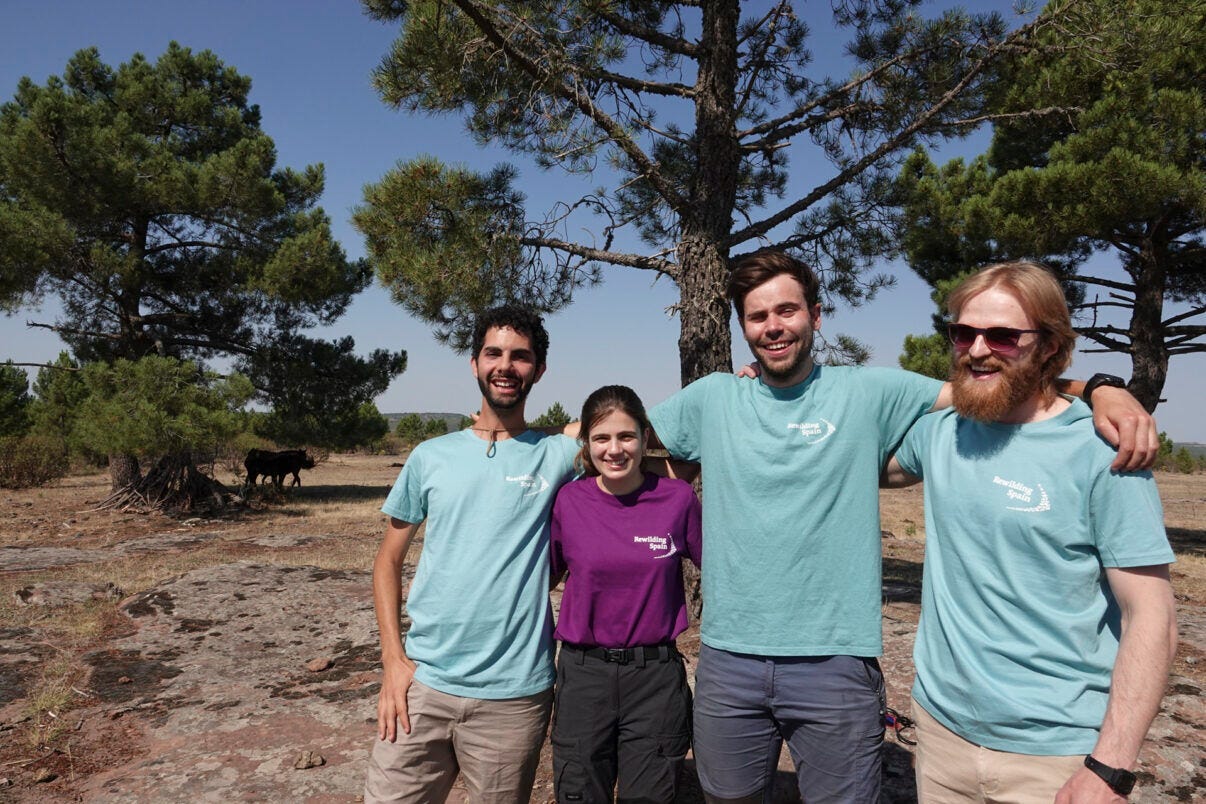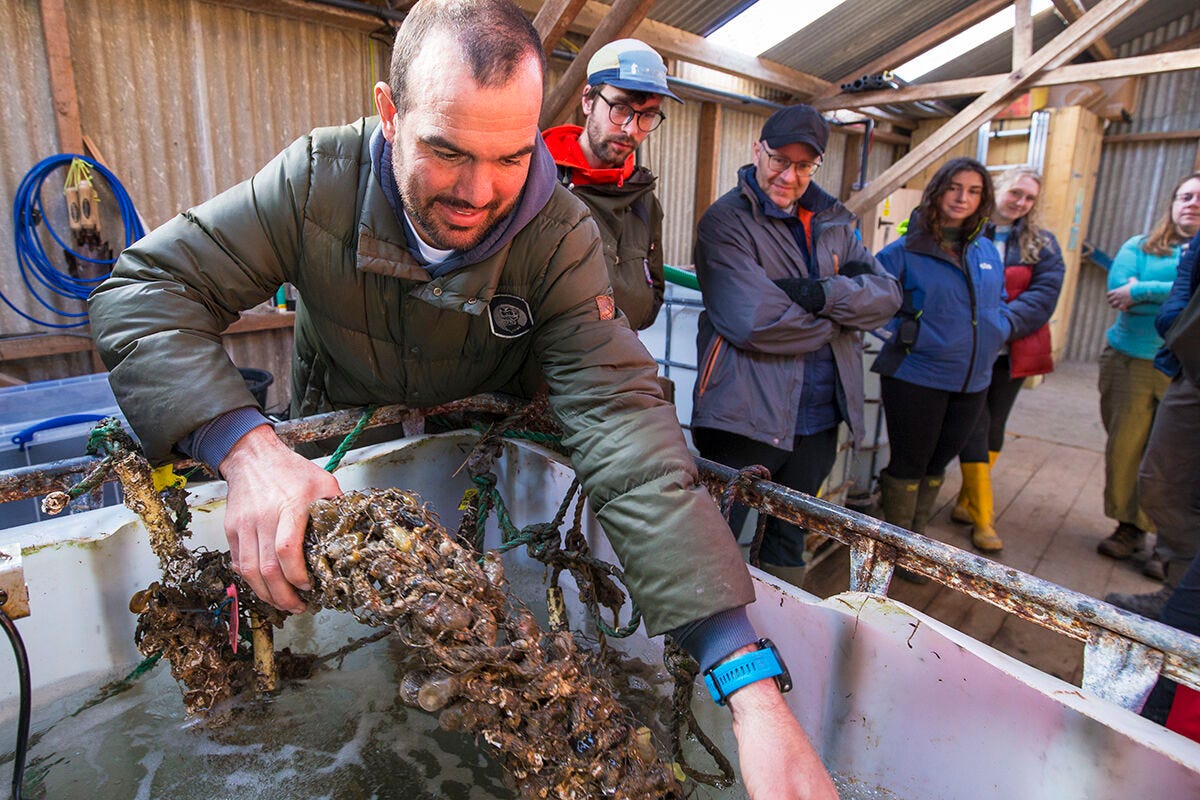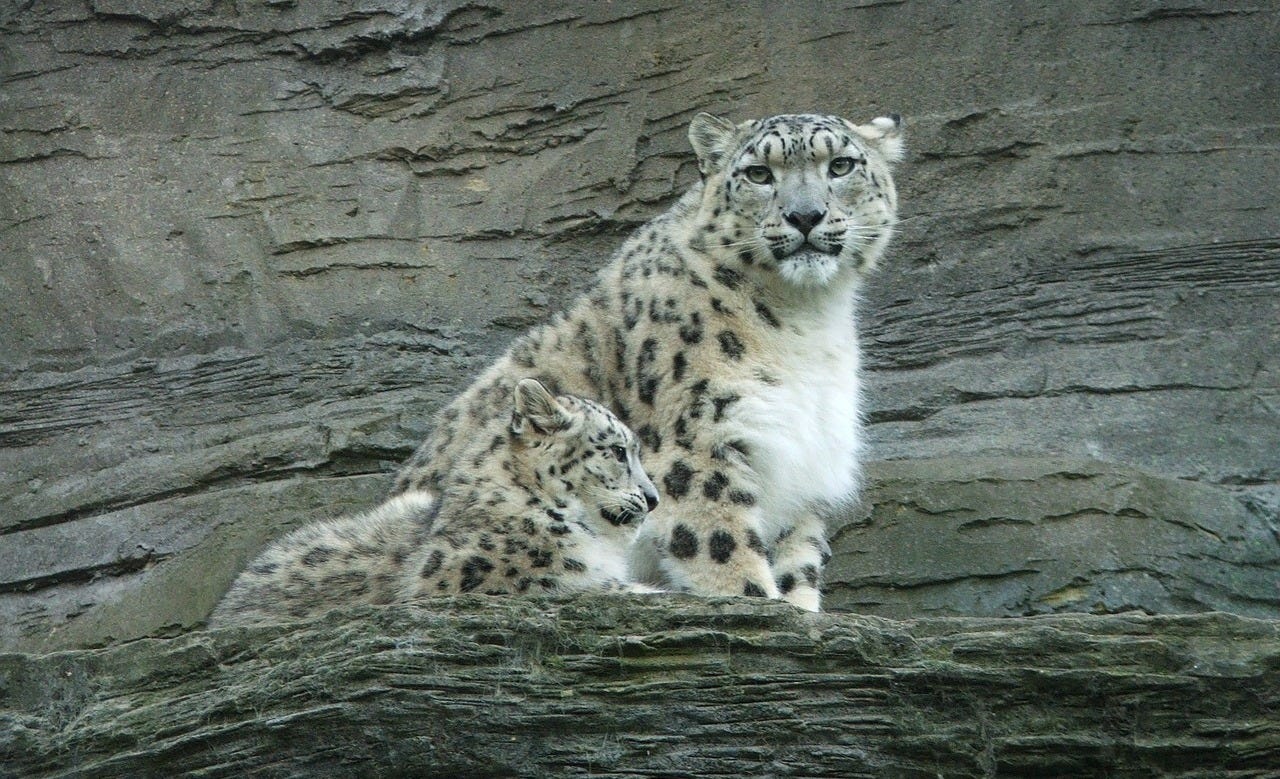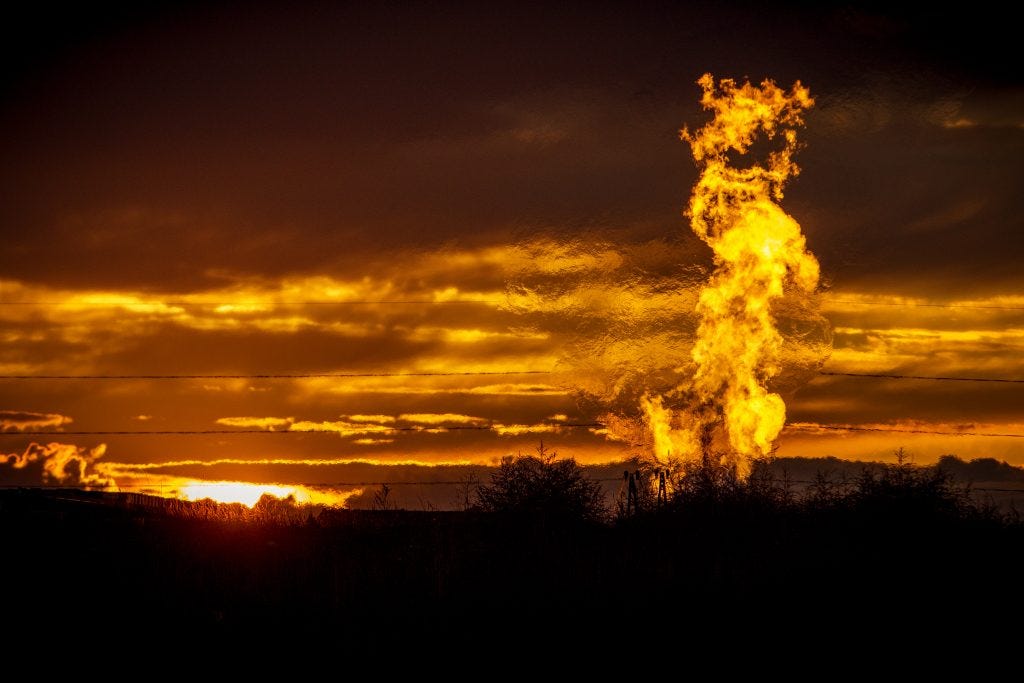Welcome to the latest edition of the Rewilder Weekly! 🦬🌳🐺🌞🌍
Before we jump in, allow me to highlight that the 20th of March is coming up soon. What’s on the 20th of March, you ask? Why, it’ll be WORLD REWILDING DAY, of course! Follow this link to find out all about it and - importantly - how YOU can get involved.
Now then, let’s get on with it - wishing you a good week!
Cheers,
👉 As a reminder: If you come across stories you’d like to see featured in an upcoming edition of the Rewilder Weekly, send them to me and I’ll gladly do what I can.
1) Go, beaver, go!
For four hundred years, beavers were extinct in Britain. Then, a few decades back, some beavers were returned, but only to be kept in enclosures. And then there were escapes and no doubt also some illegal releases. They’ve made the isle their home again, and have shown just how essential they are. Today there are 4-500 beavers living free in England’s nature once more.
Last week the UK Government did the right thing (BRAVO!) and finally decided that, after all of these years, it will finally be legal to release beavers into the wild. This is great news, as the beaver is a keystone species, an ecosystem engineer par excellence. Here’s what the Beaver Trust said, “We welcome the news that the Government will be setting out their plans to return wild-living beavers to English waterways. At Beaver Trust, our vision is for thriving waterways vibrant with life, where beavers are embraced as a vital part of our biodiverse landscape. As England grapples with increasingly extreme weather, biodiversity loss and water management concerns, the return of beavers offers an opportunity for nature recovery and climate resilience.”
👉 Go here for the Beaver Trust’s response to the good news
👉 and here to engage on LinkedIn
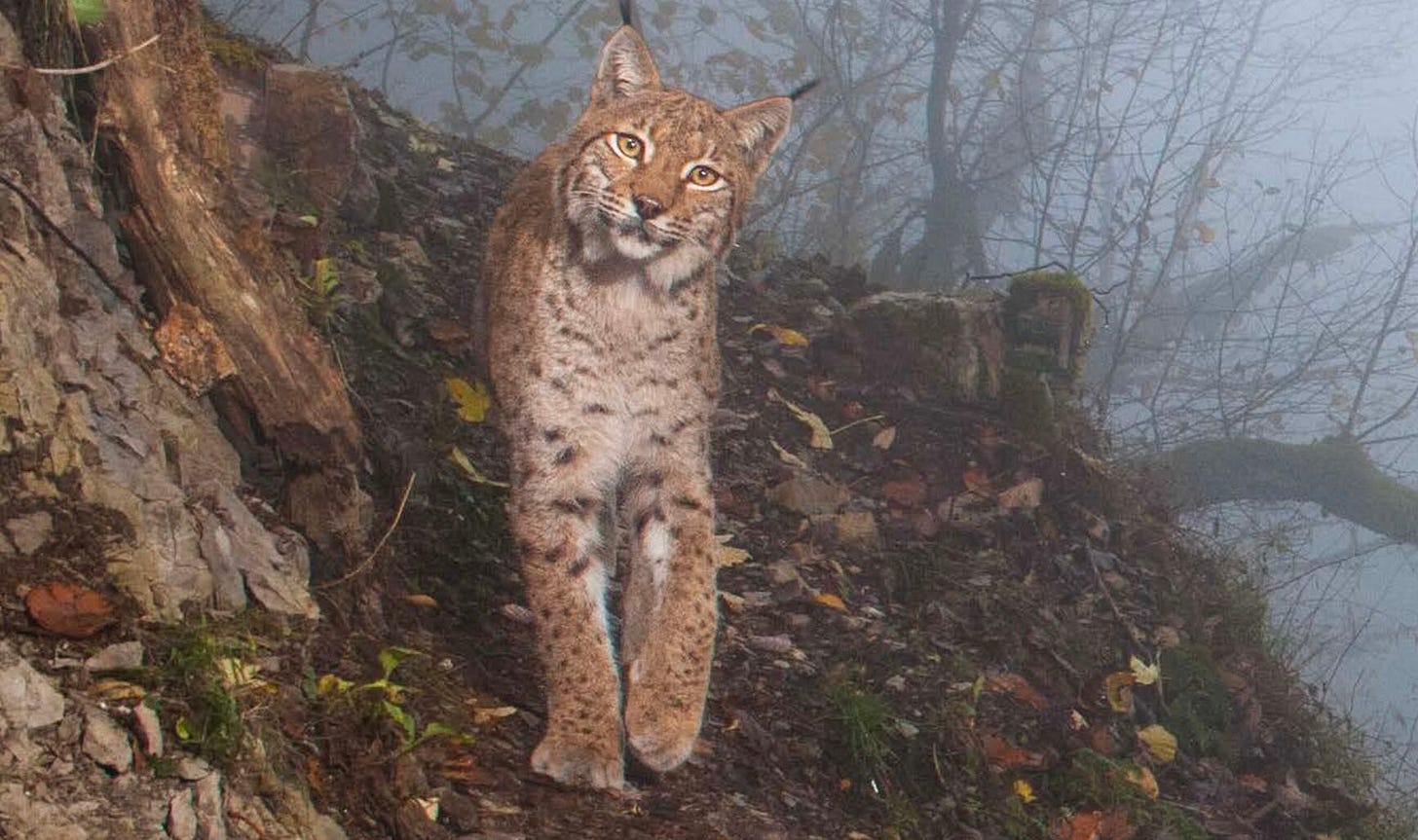
2) The hypocrisy behind Sweden’s lynx slaughter
Last week marked the beginning of another illegal trophy hunting season in Sweden. Licenses for the slaughter of 87 lynx are handed out purely for the pleasure of hunters - there is zero justification for allowing that slaughter. Magnus Orrebrant, Chairman of the Swedish Carnivore Association rightly asks, “Why hunt lynx at all? This hunt exists only to satisfy hunters. A massive majority of Swedes want the magnificent lynx to roam free in our nature. Lynx are also beneficial to us humans, since they keep especially the roe deer populations in check and in better health, at the same time as they lower the risk for traffic accidents.”
The hypocrisy of hunting lobbies is easily shown for what it is when you look at the traffic accident numbers. In 2023, out of over 68’000 traffic accidents in Sweden, nearly 50’000 involved roe deer! Roe deer are, you guessed it, the lynx’ favorite prey. But no, instead of letting nature lead, of allowing the lynx to do what it does extremely well, hunting lobbies accept thousands of car crashes and injuries - for the special pleasure of slaughtering a lynx.
👉 Go here to read Sweden’s Big Five article
👉 and here to engage on LinkedIn
3) Wild horses thrive in the Danube Delta
On the occasion of World Horse Day that was celebrated March 1st, Rewilding Europe shared insights and pictures from rewilding efforts with wild horses (Konik and Hutsul (or Hucul)) in the Danube Delta. Wild horses are part of that wonderful tribe of large grazers that operate as sublime ecosystem engineers. As Rewilding Europe explains, “The presence of horses helps restore ecosystems through natural grazing. We have found that where regular grazing takes place, there is regulation of the spread of various plant species, a reduction in the risk of fire, and the clearing of dikes from weeds and excess vegetation.”
The Danube Delta spans 580’000 hectares - a vast wetland (Europe’s largest) where the Danube flows into the Black Sea between Romania, Moldova and Ukraine. The work of rewilders on the ground is about monitoring, safeguarding, and restoring as needed. By the way, the vast and barely populated area is not just home to increasing numbers of feral horses, but to another iconic large herbivore - the water buffalo.
👉 Go here to learn more about rewilding horses in Europe
👉 and here to engage on LinkedIn
4) Don’t be fooled by Europe’s rising carnivore numbers
A recent Guardian article looks at the rise of Europe’s big carnivores (brown bear, wolf, lynx, wolverine and golden jackal), highlighting that there are now about 20’500 brown bears in Europe (a 17% rise since 2016); 9’400 lynx (up 21%); 1’300 wolverines (up 16%); 23’000 wolves (up 35%) and 150’000 golden jackals (up 46%). Now, these numbers may feel heartening - but do not be fooled.
Look at the above maps above (and find more in the European Commission’s summary linked below) and you’ll see that many European countries are practically devoid of some or all of these essential ecosystem engineers. Just because numbers of carnivores are on the rise “in Europe”, does not mean that - biodiversity-wise - things are in a good place in Europe. Degraded landscapes will improve, when we allow these carnivores across national borders, in all countries. As uncomfortable as that sounds, that is when nature will begin to dramatically improve.
👉 Go here for the European Commission’s insights
👉 and here to engage on LinkedIn
5) Immerse yourself - become a rewilder!
Take a closer look at Rewilding Europe’s Iberian Highlands volunteering program. Last year was the inaugural year of the program - and the feedback is stellar. And guess what - they report that over eighty applications have already been received for the 2025 program!
Whether it’s this program or another - find your path, engage, learn about nature recovery efforts, immerse yourself in the rewilding principles, become an advocate, become active in whichever way you can. This is how we strengthen our connection with the natural world, this is how we go from loftily caring about nature, to getting our hands dirty, to committing time, to giving time - for the biodiversity-rich nature that offers the healthy ecosystems we all need to thrive into the future.
👉 Go here to apply to volunteer with Rewilding Spain
👉 here to see a host of rewilding events, trainings and travel opportunities
👉 and here to engage on LinkedIn
6) Seawilding’s focus on oysters
Seawilding is an excellent Scottish organization focused on restoring degraded marine habitats and species, including native oysters, seagrass and other priority marine features around coastal shorelines. In the above image you see Seawilding’s Philip Price during one of Scotland: The Big Picture’s Learning Days.
Learn more about Seawilding, their oysters and seagrass projects, in this 7-min documentary. There’s a great deal that’s particularly impactful about Seawilding: it’s community-led; it’s science-driven; its best practice learnings are rolled out up and down Scotland’s western coast; it employs citizen scientists, creates jobs and - maybe most importantly - it activates the next generation by bringing in and inspiring local children from primary through to high school.
👉 Go here to learn more about Seawilding
👉 and here to engage on LinkedIn
7) How farmers protect snow leopards in Nepal
Snow leopards - the nick-named “ghosts of the mountains” - often prey on livestock. Not unlike other large carnivores elsewhere, they go for more livestock when wild prey becomes less abundant (usually because of human endeavors). The go-to move for farmers everywhere has been, most often, to blame the carnivore and go for the kill.
A recent in-depth BBC article tells a great story about Nepali women who, in the high regions of Dolpa, do excellent work to foster coexistence between these large carnivores and farmers. Largest livestock losses are usually incurred at night, when livestock is herded together in low stonewall corrals. Those walls are suitable to keep livestock in, of course, but entirely useless to keep the snow leopard out. The ways of nightly protection are simple and have already proven to be highly effective. Discover the ways - and how the farmers’ coexistence measures do far more than prevent livestock kills.
👉 and here to engage on LinkedIn
8) The massive nature destroyer we could easily stop
A huge chunk of the global warming crisis could be tackled today without new technologies, without massive investments and without disruption to any industry ... just by fixing methane gas leaks. The ongoing methane gas emissions are akin to throwing millions of gallons of gasoline into already burning wildfires - and fossil fuel industries could, absolutely, choose not to throw those gallons.
The resulting more and more extreme weather conditions come with more and more extreme floods, and draughts, and wildfires. Entire landscapes are destroyed and with it, flora and fauna in unimaginable immensities. Millions more people will die of respiratory illnesses, strokes, dehydration, cardiovascular and cerebrovascular and mosquito-driven diseases. Unfortunately, while the previous US administration at least imposed a methane fee, the new one has just killed that.
👉 Go here for my in-depth article
👉 and here to engage on LinkedIn
As usual, the Rewilder Weekly concludes with a nature science illustration. This time science illustrator Beverly McKay gives us a beautiful study of the greater flamingo.
If you enjoy the Rewilder Weekly …
… please consider supporting my work. Your paid subscription will help generate the funds needed to realize a unique rewilding book I’m working on (if you want to know more about it, let me know). And, of course, that paid subscription also ensures that the Rewilder Weekly will always keep going for those who cannot afford to pay. A thousand thanks!
That’s it for this week’s edition! For more rewilding insights and stories from around the globe, use the #rewilding hashtag on LinkedIn and follow people, organizations and groups that are as passionate about rewilding as you are. Let’s keep connecting and growing the movement!








